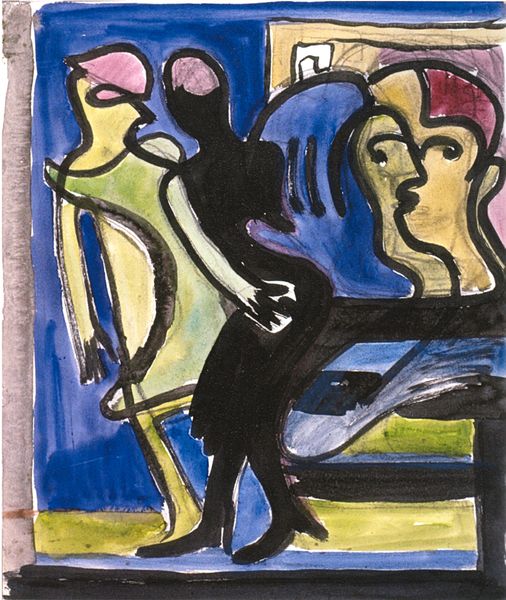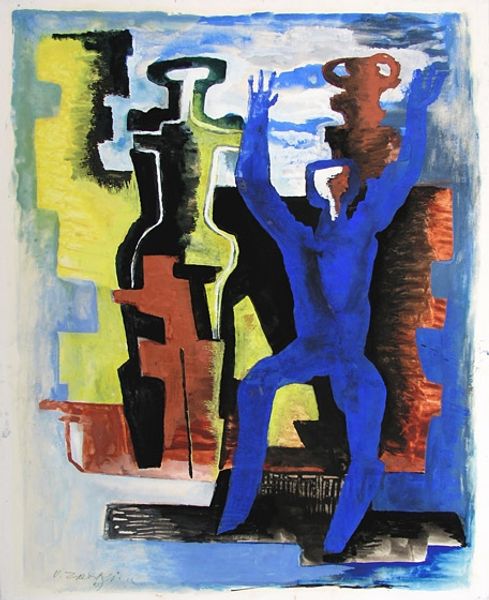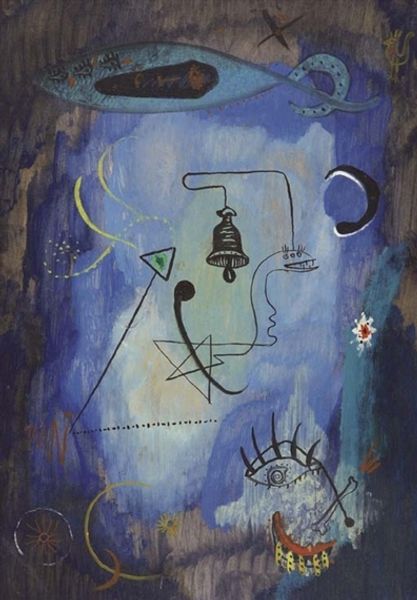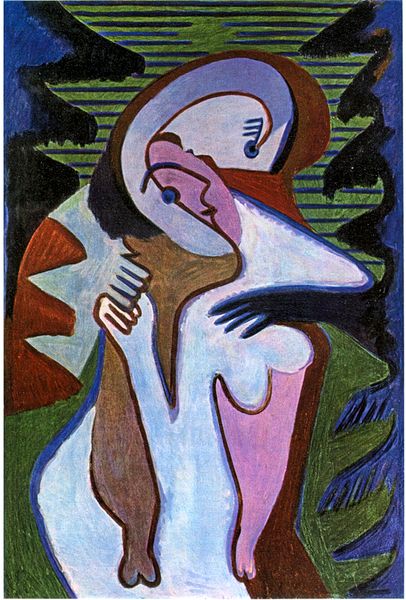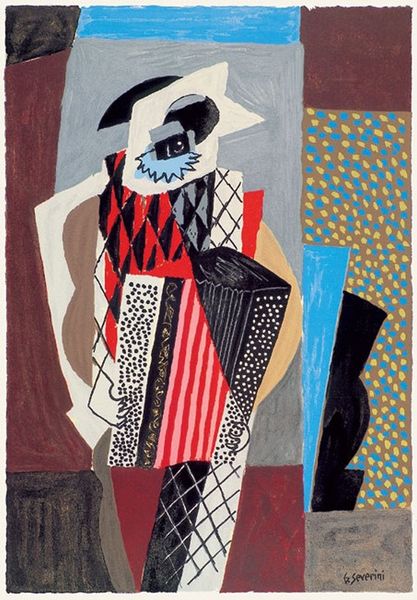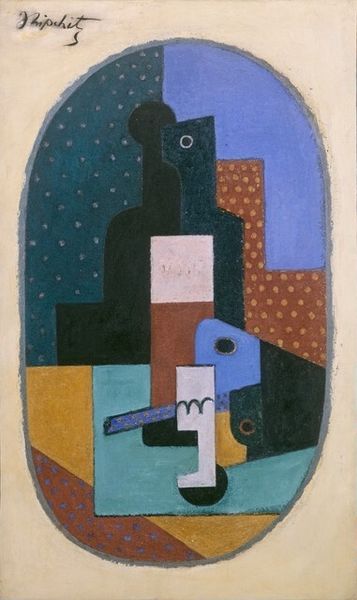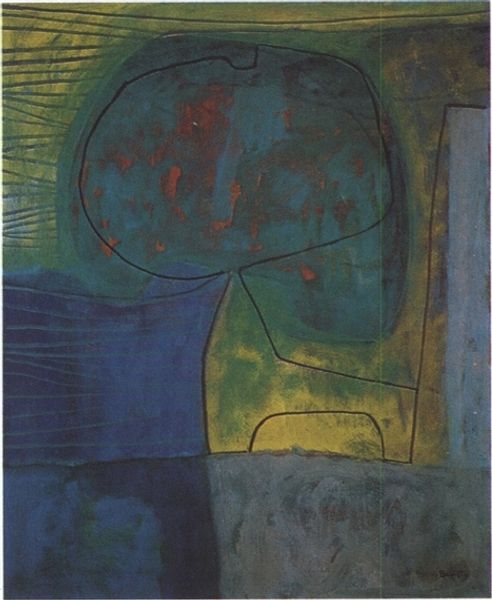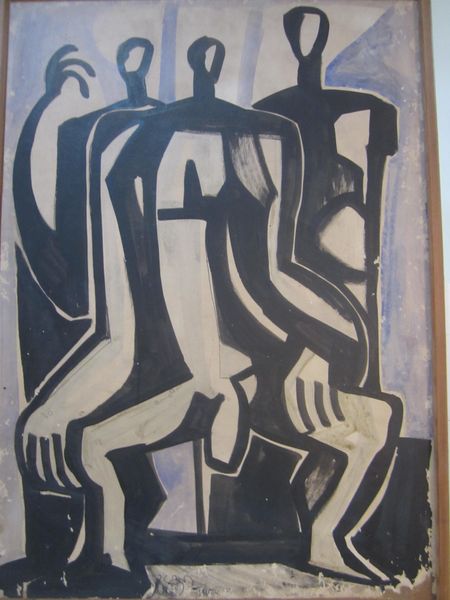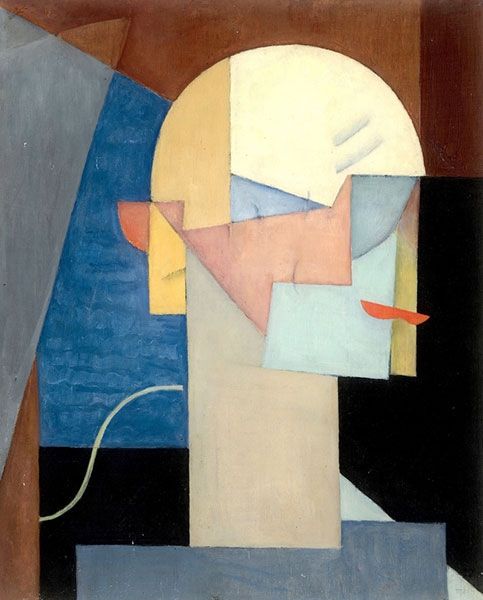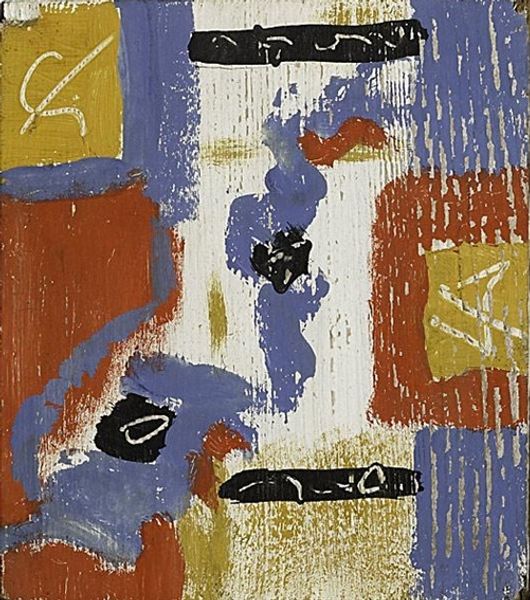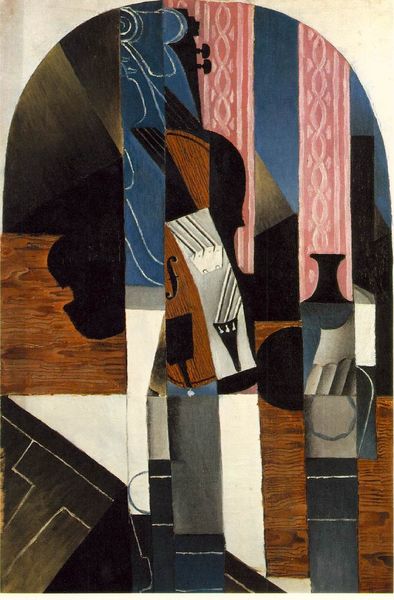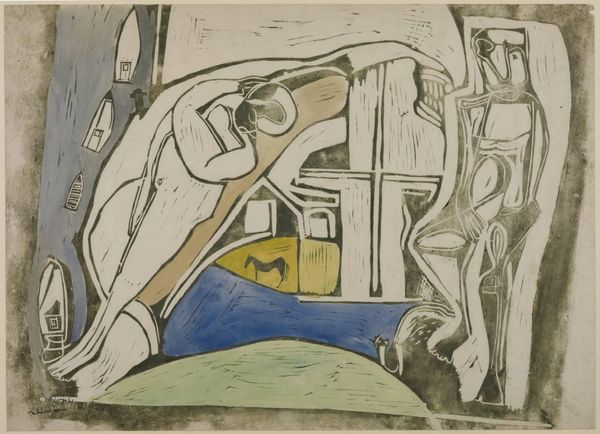
painting, oil-paint
#
cubism
#
painting
#
oil-paint
#
figuration
#
female-nude
#
geometric
#
nude
#
modernism
Dimensions: 130 x 97 cm
Copyright: Pablo Picasso,Fair Use
Curator: Let’s spend a moment looking at Picasso’s “The Shadow,” painted in 1953. We see his continued exploration of form and the figure. Editor: My initial reaction is stark; that shadow figure dominates. It feels almost oppressive, looming over the scene within. The palette is restrained, but the contrast is powerful. Curator: Yes, that central shadow figure demands our attention. Painted during a period of personal and political turmoil for Picasso, this piece is read as a commentary on voyeurism, observation and the anxieties of the artist in a modern world dominated by spectatorship. Notice how he plays with interior and exterior spaces. Editor: I’m more drawn to how those layers contribute to its making. It's oil on canvas, yes, but look at the texture – the roughness of the brushstrokes and the thin application of the paint in sections that exposes the canvas texture below, it suggests a speed of production or perhaps even urgency. What kind of social commentary is enabled when the speed of labor is so quick? Curator: One could argue it's less about speed, more about disrupting conventional expectations for both technique and representation and embracing a raw expression. Think about his break from the traditional art academy to make the work that was representative of the turn of the century. What's often forgotten in his artistic choices is that the state or even art markets weren't often the audience to dictate Picasso's content, or how he presented it. He painted in spite of these factors. Editor: I find it so compelling how the shadowed figure blocks us, obscuring but also framing our view. How the materiality emphasizes a blockage but also points our viewing attention to the labor of painting. It emphasizes art-making as an activity. Curator: Certainly the figure makes the audience reflect, especially during the politically unstable and turbulent periods of the artist. The question then is how art history remembers the turbulence by displaying works like this or does the institution silence them through either omissions or strategic representation of solely earlier works. Editor: Indeed. And thinking about these layers of context adds so much to experiencing the materiality of the work in this present moment. Curator: It gives the piece such great meaning and depth to revisit it through all those facets. Editor: Yes, it's not just what is presented but how and why.
Comments
No comments
Be the first to comment and join the conversation on the ultimate creative platform.
